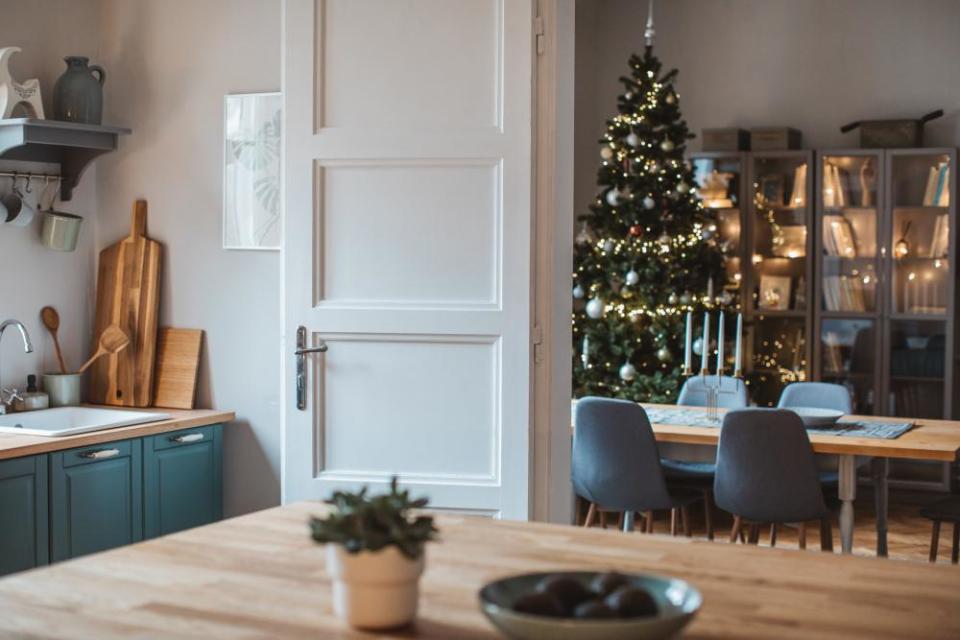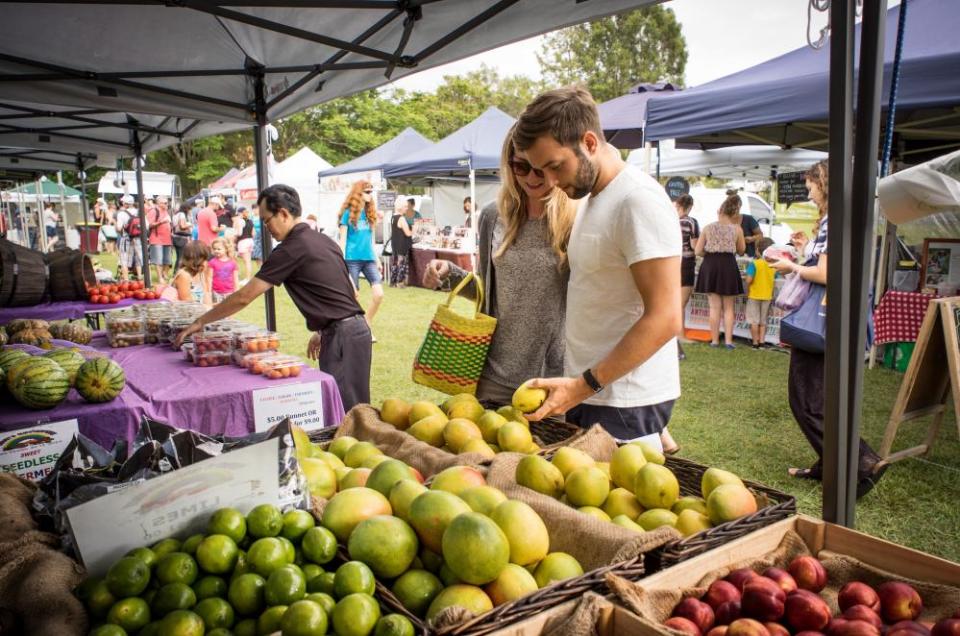Budget, borrow and ask the butcher: a first timer’s guide to hosting Christmas
I’m hosting our family’s Christmas for the first time this year. With less than three weeks to the day, I’m making a list, and checking it twice.
What should we cook? How do we put a tree up? Do we continue traditions or seize the opportunity to make our own? And, maybe most importantly, what isn’t even on the radar?
After a couple of years of touch-and-go Christmases, I know I’m not alone in these predicaments. So I’ve enlisted the help of a few experts to guide us through it.
The plan: ‘Sometimes pillow cases go missing’
Darcie Naughton hosted her first Christmas last year in Melbourne after Covid prevented a trip back to her native Western Australia. Eight adults and her two-year-old gathered in her two-bedroom apartment, while she was 30 weeks pregnant. “Getting the house properly clean” ahead of time helped, and she reassuringly adds that hosting was less stressful than “having to travel somewhere for lunch with a baby who sleeps over lunchtime”.
“At home we just popped her down for her normal nap before everyone arrived.”
As the owner of a design and decorating studio, Emma Blomfield is in charge of planning parts of Christmas every year – no matter who is hosting. She proposes making an achievable list of chores that can be chipped away at over the next few weeks, such as hanging art or finally replacing that lightbulb, checking bedding sets (“sometimes pillow cases go missing”) and inspecting serving ware for holes, chips and cracks.
Check you have a full set of cutlery and, if not, try to borrow before you buy. Chairs, tables, crockery and glassware can all be rented and returned too, if you can’t source them for free.
As for the meal, Angela Metri, founder of produce box the Spread Method, recommends first deciding whether you’re actually a planner, or just someone who would “like to be a planner”.
If planning eases (rather than exacerbating) stress, start contacting local producers, such as butchers and fishmongers, now and map out a menu. Blomfield notes this step will also allow you to ensure you have appropriate serving ware.
But if you thrive in last minute-ness, Metri suggests heading to a farmer’s market a few days before 25 December and asking vendors for their recommendations. “It’s the most personalised help you could receive and you don’t need to plan much. The produce is really fresh to boot.”
The decorations: ‘Start from the back then zigzag out’
Alana Arena’s Dancer and Dasher create opulent, ostentatious, OTT trees for celebrities. For her clients, “sparse trees are just not a thing”.
“The tree goes up straight after Halloween” in Arena’s house, but there’s no need to worry if you’ve left it a little later this year.
Don’t own a tree or decorations? See what you can borrow from nearby family and friends before you go shopping. This will save money and storage space come 26 December.
If buying a new tree, Arena suggests choosing a fake one – “real trees should stay in the ground”. If you want it to heave with lights, tinsel and ornaments, find one with “sturdy, thick tendrils” as they’re perfect for decorating.
When setting up the tree, prioritise a spot with power access, in view of the living room or dining table. While Arena says pre-lit trees “save so much time”, if you’re lighting it yourself she suggests going from side-to-side to “hide the cords more easily”.
“I start from the back of the branch then zigzag it to the front,” she says. “I also leave more lights through the interior … so it glows from the centre out.”
Once your tree is lit, start with the largest and most special decorations, giving them prime position, followed by the tree topper, then the rest from largest to smallest.
As for the table setting, if you need to hit up an op shop for more serving ware, Blomfield suggests sticking with a theme. Crockery and cutlery doesn’t need to belong to the same set as long as there is “consistency in terms of colour or shape”.
To decorate, Blomfield searches for flowers, branches and Christmas bush cuttings to create a big bouquet, or stretch along the table “in little bud vases”. Arena adds that extra tree decorations work scattered along the table, or as gifts atop each napkin. Blomfield suggests tying or folding napkins – whether paper or linen – and resting them on a plate with a handwritten name card “on a beautiful piece of paper”.
The guests: little touches go a long way
Whether you have people staying over in a spare room, on a blow-up mattress, or on the couch, Blomfield says small touches make a big difference: nice linen, a side table with a phone charger and a glass of water, maybe even a pair of earplugs and a sleeping mask, or a chocolate on the pillow. Extra special, hotel-like touches – say slippers or a robe – can double as gifts.
And if children are attending, focus on creating a bit of magic. It could involve making a Santa sack together, or leaving cookies out. “My aunt and uncle once went and stamped out little hoof prints in the dirt outside and they found an old antler,” Blomfield says. “We thought that Rudolph had left his antler behind.”
The meal: ‘We all know people who love the soggy chip’
When preparing any special meal, “you have to choose the thing you’re happy to spend: time, money or effort”, Metri says.
If you “don’t mind effort but need to keep costs low, then be prepared to spend time and effort to make a thoughtful plan”, including what you’ll buy, where you’ll buy it and how you’ll allocate your budget. But if you “hate cooking, spend on high-quality ready made foods”.
Think about what your loved ones enjoy eating and choose a showstopper (a splurge to budget everything else around), something to pass around (potatoes, vegetables), something colourful (a salad) and something fun (like a “really good bread to mop up sauces” – she suggests a tearable option like fougasse).
Your showstopper should “trigger a sense of festivity and celebration … Don’t feel pressured to cook a whole turkey if that doesn’t actually feel very celebratory,” Metri says. “Jewelled rice might be festive in one home yet never seen in another.”
If you are going to brave a well-worn family recipe, surrender expectations: “Different ingredients, equipment, timing and cooking experience … guarantee different results,” Metri says.
Naughton chose not to worry about traditions. She bought “fresh veggies and seafood at the markets” and served homemade focaccia, oysters, prawns, ham and “heaps of really great salads”.
Importantly, don’t sweat the small stuff. “Hosting is one of the most beautiful ways to say I love you. Even if your dishes don’t turn out perfectly, trust me, your guests will appreciate the effort,” Metri says.
“We all know people … who love the slightly soggy chip.”

The schedule
3 weeks before Christmas
Figure out what you need and don’t have (a long enough table? Collapsible chairs? A blow-up mattress? Enough plates?) and start asking around to see what you can borrow.
2 weeks before Christmas
Finalise your menu and shopping list (including drinks, ice and kids’ food).
1-2 weeks before
Schedule your visits to the deli, farmers’ markets, butcher, specialty stores, fishmonger and bakery and call ahead if you can – they’ll love you for it.
Order anything else you need online.

3-4 days before
Start making anything that will keep well in the fridge, freezer or pantry. You can freeze pickles, desserts, flavoured salts or pastry-based dishes
2-3 days before
Head to the supermarket for your big shop – drinks, snacks and anything else you need before the day (delegate this job to someone who won’t be cooking, if you can).
Begin the household tidy-up.

The day before
Buy bread, seafood and anything else you need extra fresh.
Slow-cook large pieces of meat overnight.
On the day
Prepare easy, on-the-spot options like tinned seafood with crusty bread, sashimi or crudités (raw vegetables) served with dips.
Set a hard deadline for when you’ll stop cooking, so you can be present with your guests. This can be especially hard to do, but they will remember your presence more than you rushing around trying to finish a sauce.

 Yahoo Sports
Yahoo Sports 